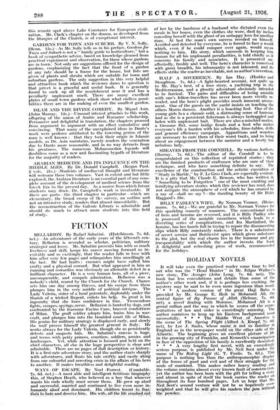, THE ABBEY OF ST. GALL. By J. M. Clark.
(Cam- bridge University Press. 18s. net.)—Most people who read German know Scheffel's Eklcehard, that well-written historical romance which describes St. Gall in the tenth century. To them and to others we can warmly commend: Mr. Clark's scholarly account of the famous abbey, more especially in respect of its services to education, literature, art, and music in the Dark Ages between the seventh and eleventh centuries. Mr. Clark thinks that the abbey owed, rather less to Irish influences and rather more to Anglo- Saxon than is commonly supposed. St. Gall, the founder,' was an Irishman ; his bell and crozier, typically Celtic in Style, are still preserved in the abbey library with many. manuscripts by early Irish scribes. But native Swabian monks were chiefly responsible for the good work done in
this remote spot above Lake Constance for European civili- zation. Mr. Clark's Chapter on the drama, as developed from the liturgies of the Church, is of exceptional interest.



































 Previous page
Previous page